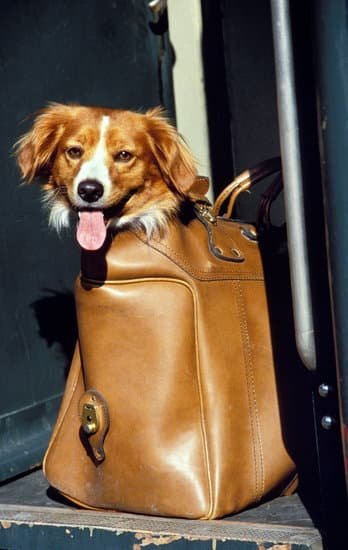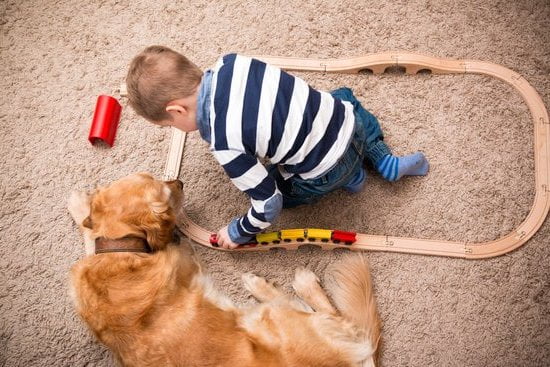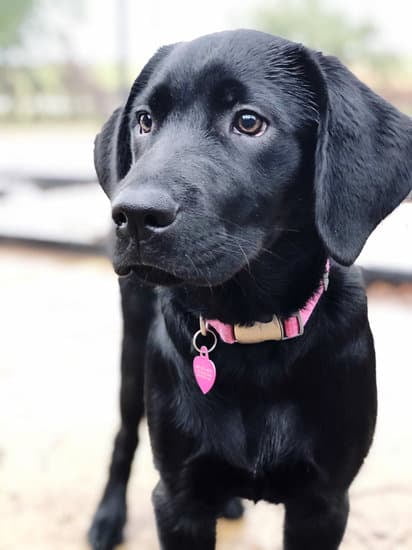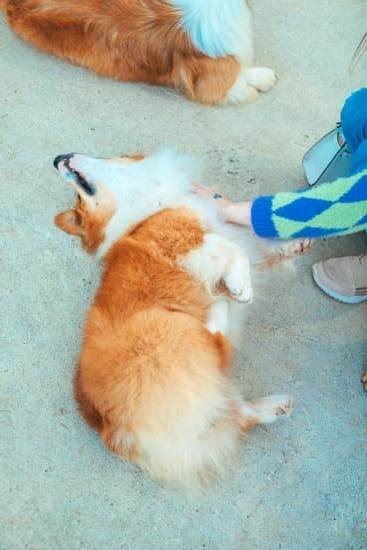Introduction
Dog agility training is a way to have fun and challenge your pup by teaching them to do fun activities such as jump over hurdles, weave through poles, and tunnel under objects. It can help promote overall physical health and mental stimulation for your pup. Agile dogs are sharper in their reflexes, able to stay focused for longer periods of time, and more responsive to their handler’s commands. Additionally, it provides you with a great opportunity to bond with your pup in a stimulating environment that allows both of you to practice physical skills together. This type of training is suitable for dogs of all sizes, breeds, and ages as long as they are healthy enough to participate. To make this possible, you can purchase items like hurdles or make DIY obstacles using everyday materials like PVC pipes or pylons so you can safely create courses in your own home or yard. You can also find online resources showing how to conduct the obstacle activities with your dog, without investing too much money into the activity.
Preparing Your Dog for Agility Training
Before starting agility training with your dog, it is important to have a solid foundation of basic obedience commands and behaviors. Sit, stay, come when called and walking calmly on a leash are all necessary skills for successful agility training. You will also want to introduce any contact obstacles (like the A-Frame or Dog Walk) in a low stress environment so your dog can get used to them in their own time. Additionally, you should ensure that your dog is healthy enough to participate in an active training program; talk to your veterinarian if you’re unsure. Finally, start slowly in order to prevent any injuries and make sure that both you and your pup are having fun with the process!
Setting Up an Affordable DIY Dog Agility Course
If you’re looking to get your dog into agility training without breaking the bank, creating a DIY dog agility course can be an economical and fun way to do so. With a few basic supplies such as PVC piping, plastic sheeting, and some easy-to-assemble hardware, you can make an inexpensive obstacle course for your pup to practice their skills. And it doesn’t even have to take up much space! If said space is limited, look for items that are lightweight but durable enough for repeat use. If possible set up an outdoor area so that the weather won’t ruin any of the materials you use. While there may be a learning curve when it comes to actually building the course, plenty of resources online offer step-by-step blueprints with detailed instructions. All in all, setting up a DIY dog agility course should not take too long – just remember that safety should always come first throughout the building process. Finally, don’t forget to add some fun touches along the way (i.e., colorful flags or ribbon!) – this will make it easier for your pooch to navigate around the course and keep them motivated! With just these simple steps you can construct a safe and challenging course for your furry friend that’ll help foster their natural skillset for years come.
Walking and Hoop Drills
Diy Dog Agility Training is an effective, fun way to help your dog get in shape, build confidence and establish basic communication between you and the pooch. The fundamentals of agility training include walking and hoop drills. Walking drills involve having the pet follow a route that has been predetermined by the handler. This can include winding around obstacles such as cones, poles or chairs and may even require that the pup remain on a certain surface (such as gravel or cement). Hoop drills involve guiding the pup through hoops or tunnels that are located along a path. With these exercises, it is important for both the handler and pet to maintain good communication in order for them to complete the drill successfully. Both these drills also teach discipline to your dog while they complete it correctly, which helps with more complex tasks down the line. With consistent practice, both you and your pooch will master these basics of agility training in no time!
Tunnels and Weave Poles
Diy dog agility is a great way to keep your pup fit and offer them mental stimulation. It is also a fun bonding activity that can be done wherever you have plenty of room outdoors. Tunnels, weave poles and jumps are the three main pieces of equipment typically used in diy dog agility training. Each offers different physical, mental and emotional benefits for your pup. Tunnels present an interesting challenge for pups who must maneuver through a dark, tight space. Weave poles, on the other hand, build on problem-solving skills as dogs race to working memory by repeating patterns. Lastly, jumps help provide muscle strength and joint health via short bursts of running at jump heights determined by their size. All three items are essential for building a full course that challenges and entertains your pup! With the help of these pieces of equipment, you can train up any pup to be an agile champ!
Jumps and See Saws
When it comes to Diy Dog Agility Training, setting up jumps and see saws can create stimulating challenges with great benefits. Installing jumps is a fun way to give your dog an exciting challenge that teaches coordination, agility, speed and control. With appropriate height measurements objectives on the jumps, your dog can learn how to leap in response to previously set flight paths. A helpful tip for installing the jumps could be marking two lines for each jump – beginning line and the end line. This will help instruct your pup what its expectations are and will make establishing boundaries easier. With versatile sizes available in portable adjustable sets of jumps geared for home use, you can get started building an agility course in your own backyard or anywhere else you’d like.
See Saws require a higher level of dexterity from your four-legged friend as they will have to balance their bodyweight over the plank while learning how to move forward on safely supported step handles created by balancing different levels of height measurements. As pups are known to easily grasp innovative concepts through inherent natural instincts this activity is ideal while forming a bond between pet and owner as you establish confidence between each other while discovering simple commands when crossing over at the same time. Portable See Saw kits offer regulated levels of surface grading depending on weight sizes that provide extra safety measures since these gadgets adjust with varying placement plans seasonally.
Command Training and Hand Signals
Command training and hand signals are a great way to ensure your dog’s discipline when it comes to agility training. Teaching your dog basic commands, like sit, stay and come, can help you give clear expectations for how you want them to behave during the training process. Additionally, teaching your dog hand signals will allow them to understand more complex commands. It’s important that you use positive reinforcement when teaching command and signal behaviors. This could include giving verbal praise or treats after a successful performance of a command or signal.
Once your pup is comfortable with their commands and hand signals, the real agility training can begin! Teaching your pup obstacles such as tunnels and hurdles can take some practice since they rely on skills like jumping and climbing. Start by introducing the agility equipment while rewarding them with positive reinforcement or treats throughout their progress. Incrementally increase difficulty levels as they become more proficient in each obstacle, as this will provide motivation for them to continue improving. It’s also helpful to run through different courses on occasion so they stay sharp on all the items they’ve learned thus far!
Introducing the Obstacles
Diy dog agility training can be a great way to exercise your pup and build a unique bond. The first step to introducing obstacles is building confidence and momentum. Start off small by setting up a few individual obstacles at home like jumps, tunnels, and hoops. Depending on the breed and temperament of your pup, you should start with either two or three obstacle sessions per day that are each around ten minutes long. Make sure to use positive reinforcement and treats to motivate your dog along the way. Give your pup plenty of breaks in between training sessions and always keep an eye out for signs of fatigue so as not to overwork your pup. With patience, dedication, and consistency, dogs of all ages can learn the basics of agility!
Using Positive Reinforcement and Rewards
Positive reinforcement and rewards are essential in diy dog agility training. Positive reinforcement is a process that rewards desirable behavior and will encourage your dog to repeat what he or she did before they were rewarded. An example of positive reinforcement, in the context of agility training, is rewarding your pup with treats after he or she has successfully completed an obstacle or training exercise.
Rewards should be given immediately after the desired behavior or obedience has been completed. This will ensure that the reward sticks in your pup’s memory as something to look forward to when practicing agility again, thus improving learning and training effectiveness. Additionally, when offering verbal praise during training, avoid using words such as “no” or “bad”; instead try using phrases that clearly indicate good behavior such as ‘great job!’ Also keep in mind that verbal praise should be almost instantaneous so your pup can associate it with their success; just like treats and other tangible rewards.
Besides food rewards and verbal praise, you could use toys to create a fun game out of each obstacle, allowing them to feel more comfortable and motivated whilst learning at the same time. Other ideas for a reward system includes clickers for precise timing of reward, tugging games for jumping obstacles, retrieving games for climbing obstacles etc.. Finally, if you notice your pup feeling stressed or overwhelmed during agility practice, stop all activities immediately and take a break while engaging him/her with calming activities such as massage or playtime until they feel relaxed again so they can resume their practice in an optimal frame of mind. With these tips you’ll be able to effectively motivate your four-legged friend while having lots of fun during diy dog agility training!
Letting Your Dog Take the Lead
Getting started with diy dog agility training is enjoyable and easy but requires commitment and patience from both dog and owner. While initially the focus may be on teaching your pup a variety of commands, it is important to remember that your pet’s agility training should be observational. The goal here is to develop the communication between you and your pup as well as engaging and encouraging his natural physical abilities.
When starting out, limit the amount of commands you introduce until your pup can understand them easily. Remember not to overwork him – allow for breaks in between tasks so he doesn’t become overwhelmed or exhausted. During breaks you both can practice mental agility by introducing new tricks, such as counting and having him learn simple commands like sit, stay or come. Exploring outside of these activities will help further strengthen your bond with each other by enabling creativity and playfulness in his learning process.
Once he is attentive to basic obedience commands, you can start introducing more advanced components such as jumps, tunnels, ladders and weave poles while still focusing on keeping his attention focused on behavioral cues. This way he won’t panic if confused or tired which could impede progress if left unchecked. When attempting new activities make sure there are ample rewards available; treats are a great motivator! As competence builds up with more intense training sessions replace treats with verbal praise or affection when appropriate so he learns properly how to conserve energy while performing obstacles courses at higher speeds.
Lastly, remember that successfully mastering diy dog agility training is a team effort – it requires proper understanding from both dog and human alike an open flow of communication in order for him to reach his full potential! Ultimately it should be fun for everyone involved- by implementing effective methods adjusted towards his skill level you will ensure long lasting success!
Tips for Maintaining Your Dog’s Interest and Timing Breaks
When it comes to diy dog agility training, timing breaks is essential for keeping your pup motivated and engaged. For example, if you notice your pup is slowing down or beginning to lose interest in the activity, give them a brief break from practice. This will help your pup stay energized and allow them to refocus their concentration on the tasks at hand. During these breaks, reward your pup with a special treat or toy — this will help reinforce positive behavior and create an enjoyable environment that your pup looks forward to participating in. Additionally, make sure to provide regular water breaks throughout the session as agility can be physically demanding for dogs over time. Doing so will ensure that your pup remains well-hydrated and avoid potential complications that could occur due to exhaustion or dehydration. Finally, switch up the course occasionally by introducing new obstacles or exercises to keep things fresh and interesting for both you and your pup – this can help prevent boredom from setting in which may lead to potentially unsafe distractions during practice.
Final Considerations for DIY Dog Agility Training for Success
When training your dog for agility, you must remember to take the appropriate safety precautions and pay attention to elements in the environment that might affect your training. Depending on the type of agility obstacles you may have opted for, stability can be an issue. It is important that all of the resources used in your DIY course are secure and will not put your pup at added risk of injury. Additionally, it is usually advised that when first introducing obstacles to avoid distractions from other animals and observers. Be sure to also adjust the difficulty levels over time with added maneuvers and more difficult obstacle courses. This will help keep your pup’s mental focus throughout its agility routine while still keeping it physically challenged. Finally, make sure to provide plenty of breaks so you don’t tire out or overwhelm your pup through too much repetition or high impact activities. Providing positive reinforcement will also help ensure that doing agility remains an enjoyable activity for both you and your furry friend!

Welcome to the blog! I am a professional dog trainer and have been working with dogs for many years. In this blog, I will be discussing various topics related to dog training, including tips, tricks, and advice. I hope you find this information helpful and informative. Thanks for reading!





